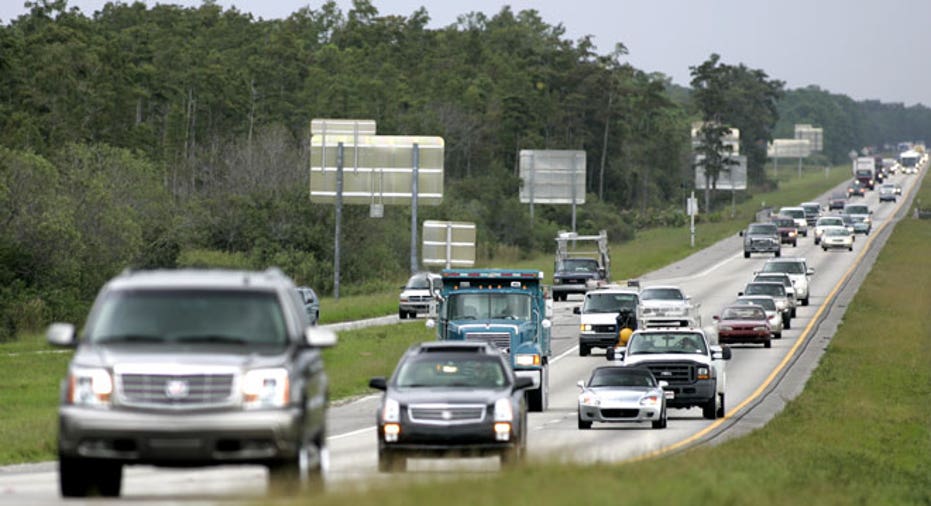Teens: Too Poor to Drive?

Is your teen too poor to drive?
There's been plenty of speculation about what's powering the trend of fewer teens getting their driver's licenses - from an addiction to social media to an overall decline in driving - but a study by the Highway Loss Data Institute (HLDI) indicates it simply comes down to a lack of cash.
Buying a car isn't cheap. Pile insurance payments, and gas and maintenance costs on top of that, and it easily costs thousands of dollars a year to drive a car.
And that's at a time when the unemployment rate for 16- to 19-year-olds is nearly 21%. While that's far lower than the 27% it reached in October of 2009 and 2010, the unemployment rate for teenagers has consistently exceeded 20% since late 2008, according to the Bureau of Labor Statistics.
While several factors fuel the decline in teen driving, "unemployment is the largest by far," says Matt Moore, vice president of the HLDI.
Rather than being uninterested in driving, "teens want to get licensed for practical and economic reasons," Moore says.
Yet many just can't afford it.
An economic decision, not a lifestyle one
A survey this summer by the AAA Foundation for Traffic Safety of 1,000 young adults between the ages of 18 and 20 found slightly more than half had their driver's licenses in hand before they turned 18. Two decades ago, two-thirds of teens had their licenses by age 18.
In particular, low-income teens were most likely to have no license today. Just one-quarter of teens from households with incomes below $20,000 had a license before they turned 18. It's a sharp contrast to households with incomes of $100,000 or more, where nearly 80% of teens were licensed.
Among the key reasons they cited for not having a license were: not having a car, gas being too expensive, and driving being too expensive.
It's tough to afford a vehicle when on average it cost more than $9,000 to own and operate a midsize sedan in 2013 that you drive 15,000 miles a year. Small sedans cost nearly $7,000 to own and operate, according to AAA.
The costs are even higher for teens, who face exorbitant insurance rates. The AAA study only considered low-risk drivers with clean records.
An 18-year-old insuring a paid-off 1997 Ford Taurus would pay anywhere from $402 a year in Iowa to $1,327 in Delaware, according to quotes gathered through CarInsurance.com's car insurance comparison engine. That's a best-case scenario: a flawless driving record, the bare minimum of insurance needed to drive legally, the cheapest ZIP code in each state -- and cheapest insurance carrier in that ZIP code.
Most young drivers will almost certainly pay more.
Add a ticket or an accident - or full comprehensive and collision coverage on a financed car - and the price soars. A two-year analysis of almost 200,000 quotes delivered through CarInsurance.com found 16-year-olds faced an average annual insurance rate of $4,075. By age 19 it was down to $2,500.
Pinch crimps parents as well
The economic downturn hasn't just hit teens. Many parents also have struggled, so they aren't in a position to help their kids pay for a car, insurance, gas and maintenance, Moore says.
While driving also dropped for adults in the HLDI comparison, the decline was nowhere near the change for teens.
The overall unemployment rate spiked at 10% in October 2009, and was down to 6.7% as of December, but many adults went through long spells of unemployment, or are now working in jobs that pay less than what they once earned.
Adults "need to drive to just live daily life," such as going to work, running errands and picking up kids at school, Moore says.
Adults also pay far lower insurance rates. The CarInsurance.com comparison found annual rates averaged about $1,500 for 30-year-olds and $1,100 for 60-year-olds.
Moore expects the number of licensed teens to eventually pick up again. "It's probably a safe bet, once the economy recovers, we'll see more teens insured again."
And when these teens start to drive?
With so many teens delaying getting their driver's licenses, there may be repercussions down the road, says Bruce Hamilton, manager of research and communications for the AAA Foundation for Traffic Safety.
Almost all states have graduated driver's license programs, which end when a teen turns 18. If teens wait longer to obtain their licenses, they miss out on the graduated license restrictions.
"Graduated driver's licenses have been very, very successful in decreasing crashes for 16- and 17-year-olds," Hamilton says.
In fact, a report by the AAA Foundation for Traffic Safety states crash rates increase 12-fold when teens first start driving without adult supervision. While it's not entirely clear what leads to that jump in crash rates, nighttime driving and alcohol both come into play.
"If they drive again when the economy gets better, we could have some really under-experienced people" behind the wheel, Hamilton says.
The original article can be found at CarInsurance.com:Teens may be too poor to drive